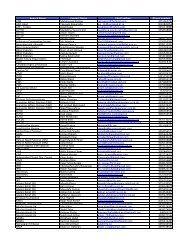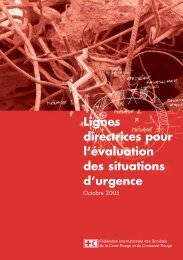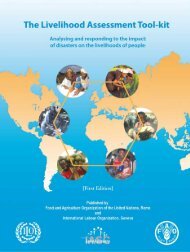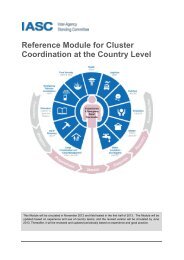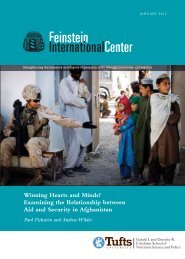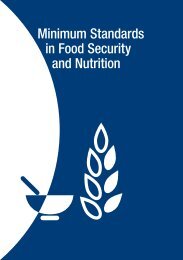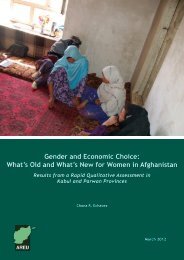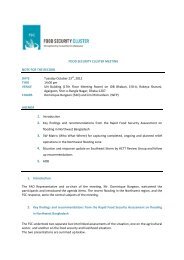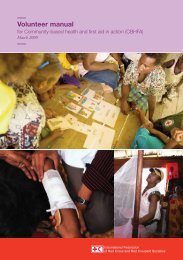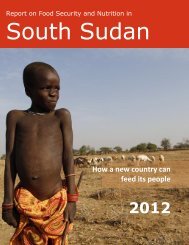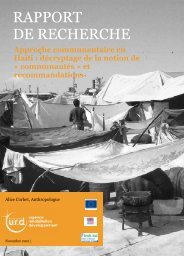Global food security assessment guidelines: A step-by - International ...
Global food security assessment guidelines: A step-by - International ...
Global food security assessment guidelines: A step-by - International ...
You also want an ePaper? Increase the reach of your titles
YUMPU automatically turns print PDFs into web optimized ePapers that Google loves.
<strong>International</strong> Federation of Red Cross and Red Crescent SocietiesFood <strong>security</strong> is not necessarily a static situation; there are likely to be normal fluctuations during theyear in terms of <strong>food</strong> availability, access and utilization. This applies to both rural and urban areas.For example:■ the price of lamb in cities can triple prior to certain religious holidays;■ a salesman buying eggs or vegetables in rural areas for re-sale in peri-urban markets may vary hisprices daily based on the purchasing power 2 of his clients;■ a landslide in an urban slum will provoke hygiene risks associated with <strong>food</strong> storage and preparation,depending on whether it is the rainy or dry season.An <strong>assessment</strong> of the effects of a flood during the ‘hunger gap’ 3 will need to consider that <strong>food</strong> stockswere in any event likely to be lower and prices higher at that particular time of year, and not necessarilyrelated to the flood.It is important to assess which changes are normal and which are due to a specific hazard or a longlastingcrisis. It is also important to note that each situation of <strong>food</strong> in<strong>security</strong> requires a differentresponse. Food aid may help save lives, whereas other programmes may be more appropriate insupporting livelihoods. These do not always include <strong>food</strong> aid. Only a thorough analysis can helpdecide on the most appropriate response for a specific context.When to conduct a <strong>food</strong> <strong>security</strong> <strong>assessment</strong>Many different situations lead to increased vulnerability to <strong>food</strong> in<strong>security</strong> and not every householdwill be affected in the same way. Some people may lose many assets abruptly (as in a rapid or acutecrisis) and suddenly find that they have few means to survive. Others may lose their assets slowly (asin a slow onset or long-lasting crisis). The figure below illustrates how <strong>food</strong> <strong>security</strong> can be affectedover time, <strong>by</strong> different kinds of crises.Examples of different response programmeswith different objectivesFoodsecureProgramme 1Disaster preparednessProgramme 2Disaster reliefProgramme 3Vulnerability reductionNormalLevel of<strong>food</strong> in<strong>security</strong>and vulnerabilityFoodinsecureExamples of copingmechanisms:Reductng Reducing mealsTaking out loansGathering wild <strong>food</strong>sSending family membersfor waged labourSelling productive toolsSelling farm landEngaging in prostitutionSlowonset disasterRapidonset disasterTime (in days, weeks or months)162 Purchasing power refers to a household’s ability to buy <strong>food</strong> and non-<strong>food</strong> items regularly, based on available income and on the value ofassets or access to credit.3 The ‘hunger gap’ refers to the period before the main harvest, when <strong>food</strong> stores are often low and people sometimes need to reduce their <strong>food</strong>intake in order to survive to the next harvest.



